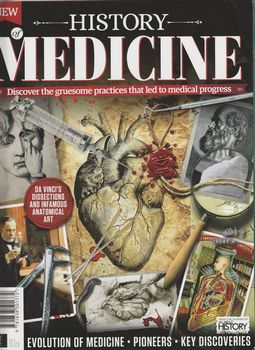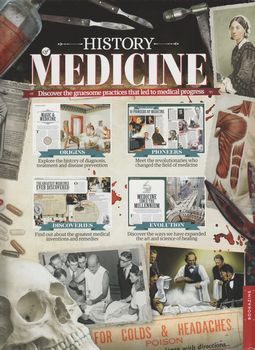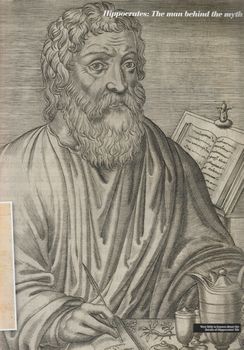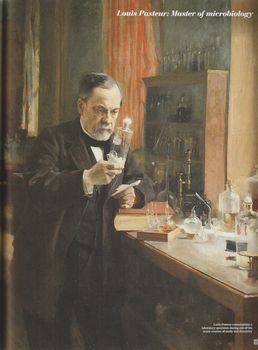medecine (history of)
| série: | Anatomie+Médecine |
| éditeur: | 10/18 |
| auteur: | Collectif |
| classement: | biblio509 |
| année: | 2019 |
| format: | broché |
| état: | TBE |
| valeur: | 10 € |
| critère: | ** |
| remarques: | English book history of medecine, discover the gruesome practices that led to medical progress, evolution of medecine, pioneers, key discoveries - 10 medicine across history - 12 magic and medicine - 18 the first doctors - 20 ancient Greek medicine - 24 from Greece to Rome - 26 how to become a Roman doctor - 28 day in the life: an apothecary - 30 medicine in the MIddle Ages - 34 day in the life: medieval plague doctor - 36 how to treat the black death - 38 tales of Tudor medicine - 46 emporium of Victorian medicine - 56 rapid relief by rail - 60 battlefield medicine - 62 the National Health Service - 66 a flying hospital - 68 day in the life: a mash doctor - 70 medicine since the millennium 10 pioneers of medicine: - 80 Hippocrates: the man behind the myth - 84 Claudius Galen: the Greek Roman doctor - 88 Leonardo da Vinci: artist of anatomy - 92 Ambroise Paré, father of modern surgery - 96 Edward Jenner: father of immunology - 100 Louis Pasteur: master of microbiology - 104 Florence Nightingale: mother of modern nursing - 110 Marie Curie: radioactive frontier - 116 Alexander Fleming: inventor of the wonder drug - 124 medical devices through history: trepan, osteotome, speculum, artificial leech, bullet extractor, lithotome, reduction device, dental key, circumcicion scissors - 126 history's greatest medical inventions: gas mask, stethoscope, thermometer, ophthalmoscope, hypodermic syringe, pacemaker, microscope, x-rays, contact lens, wheelchair, electrocardiograph - 134 the greatest medicines ever discovered: penicillin, anaesthetic, antiseptic, smallpox vaccine, morphine, aspirin, enovid, mechlorethamine, thorazine, insuloin, embryonic stemm cells, polio vaccine 140 medical firsts in history: - human heart transplant, South Africa (1967) - motorised ambulance, Chicago (1899) - defibrillator, USA (1930) - medical journal, England (1684) - hypodermic needle, England (1656) - surgery under anaesthesia, USA (1842) - vaccination programme, England (1796) - clinical trial, on sea (scurvy, 1747) >> a splendid revue about medicine and well illustrated enclosures - front and back of the book - portrait of Hippocrate - portrait of Pasteur Information (nomenclature) - urethra = the tube that allows urine to pass out of the body - bladder = hollow organ in your lower abdomen that stores urine (vessie) - lithotome = surgical knife used during perineal lithotomy to remove bladder stones - trepan = a trephine (hole saw) used by surgeons for perforating the skull - osteotome = instrument used for cutting or preparing bone - dental key = instrument that was used in dentistry to extract diseased teeth, before the era of antibiotics, dental extraction was often the method of choice to treat dental infections - mastectomy = breast cancer surgery that removes the entire breast - rash = breaking out of tiny red spots on the skin (a heat rash), an area of irritated or swollen skin, rashes can be itchy, red and painful - enovid = contraceptive drug for birth control - mechlorethamine = anti-cancer chemotherapy drug - thorazine = medication used to treat certain mental/mood disorders (such as schizophrenia) - insulin = peptide hormone produced by beta cells of the pancreatic islets; it is considered to be the main anabolic hormone of the body a) peptide = short chains of two or more amino acids, b) islet = portion of tissue structurally distinct from surrounding tissues,. c) anabolism = set of metabolic pathways that construct molecules from smaller units d) catabolism = what happens when you digest food and the molecules break down in the body for use as energy - stem cell (cellule de souche) = cells from which all other cells with specialized functions are generated, they are the earliest type of cell in a cell lineage - polio vaccine = drug to prevent from poliomyelitis, the vaccine has by now practically eliminated polio from most of the world - poliomyelitis = infectious disease caused by the poliovirus, it generally moves from the gut to affect the central nervous system and there is muscle weakness resulting in a flaccid paralysis n.b. flaccid paralysis is a neurological condition characterized by weakness or paralysis and reduced muscle tone, the gut refers to the gastrointestinal (GI) system |
| couvertures: |     |
Copyright 2008 - 2025 G. Rudolf
